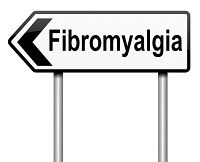Article
Fibromyalgia, Spondyloarthritis Can Occur Together, Study Finds
Author(s):
It is possible for patients to have both fibromyalgia (FM) and spondyloarthritis (SpA), and the co-existence of the two conditions can change disease activity and treatment effectiveness, according to a recent study.

It is possible for patients to have both fibromyalgia (FM) and spondyloarthritis (SpA), and the co-existence of the two conditions can change disease activity and treatment effectiveness, according to a recent study. The study, published on February 9, 2016, in Arthritis & Research Therapy, was conducted by Natalia Bello, MD, of the Rheumatology Department at Cochin Hospital,Paris, France and colleagues.
The researchers say, “FM can frequently be associated with other rheumatic diseases such as rheumatoid arthritis and Sjorgren syndrome” but there are few studies investigating prevalence of FM in patients with SpA. The researchers go on to say, “it has already been reported that SpA patients with FM tend to present with higher self-reported disease activity indices.”
To learn more about the prevalence of FM in patients diagnosed with SpA, as well as to compare TNF inhibitor (TNFi) treatment in SpA patients who have and those who do not have FM, the researchers analyzed the data of 196 patients with SpA. There 42 who had both FM and SpA (FM+), and 154 who has only SpA and not FM (FM-). The researchers found that “no significant differences were found for treatment with non-steroidal anti-inflammatory drugs and conventional disease-modifying antirheumatic drugs; as expected, the percentage of patients with either history of depression, or use of psychotropic medication or strong opioids was significantly higher in the FM+ group.”
There weren’t any significant differences between the two groups in TNFi treatment. However, according to the researchers, FM+ patients are more likely to have “unnecessary inition of a TNFi, dose escalations, or switches” because they often have higher disease activity. Concomitant FM in SpA may make it difficult to evaluate the patient’s response to treatment, and the researchers suggest, “coexistence of FM should be carefully screened when initiating a TNFi and/or evaluating its treatment effect.”




